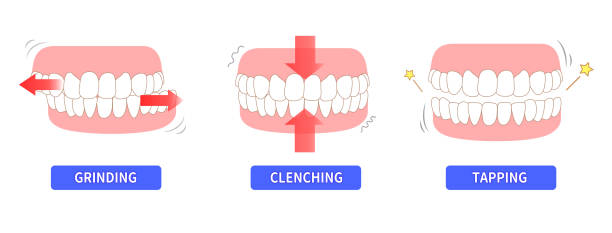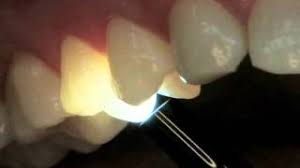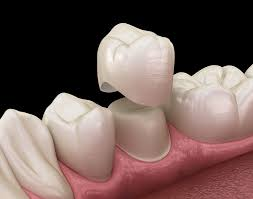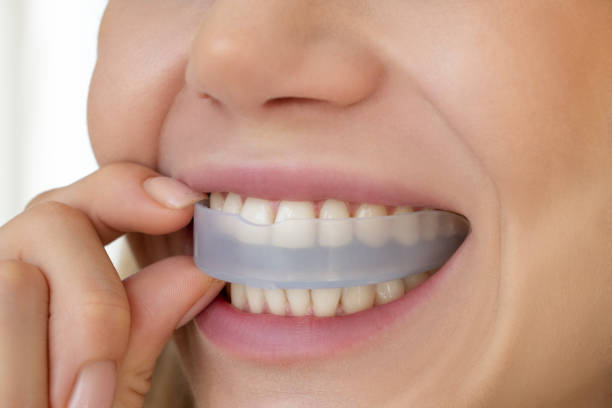The World Health Organization reports that oral diseases affect nearly 3.5 billion people globally, with dental caries and tooth fractures among the most common problems. In India, dental issues often escalate due to delayed treatment, leading to critical conditions requiring advanced interventions like root canals.
Dr. Jaydev, a renowned smile design specialist and founder of Dr. Jaydev Dental Clinic in Jubilee Hills, Hyderabad, says:
“A root canal is a way to save your natural tooth, preserving both function and aesthetics. Advanced techniques and high-end equipment ensure that the process is smooth and effective. However, in rare cases, issues like cracked tooth syndrome may arise post-treatment, requiring timely attention to prevent further damage.”
Enquire Now
This blog delves into cracked tooth syndrome after root canal, exploring its causes, symptoms, diagnosis, and management strategies. Read on to understand how to navigate this condition and maintain oral health.
What Is Cracked Tooth Syndrome After a Root Canal?

Cracked tooth syndrome (CTS) refers to the presence of an incomplete crack or fracture in a tooth that causes pain or discomfort, often during chewing or exposure to temperature changes.
According to global dental studies, cracked tooth syndrome accounts for approximately 14% of tooth pain cases in adults. The risk slightly increases in root canal-treated teeth due to the removal of pulp tissue, which can compromise the tooth’s integrity. Despite this, advanced dental techniques have significantly reduced the occurrence of CTS.
So, what causes cracked tooth syndrome after a root canal? The answers might surprise you.
Causes of Cracked Tooth Syndrome After a Root Canal
Weakened Tooth Structure
A root canal treatment (RCT) removes infected pulp, leaving the tooth hollow and more prone to fractures if not reinforced with a crown.
Inadequate Restoration
Delayed or improper dental crown placement after a root canal increases the risk of fractures.
Existing Cracks or Fractures
Pre-existing cracks may propagate post-treatment, especially without adequate reinforcement.
Excessive Biting Force

Teeth that endure high stress from grinding or clenching (bruxism) are more likely to crack, especially if already weakened.
Trauma or Injury
Accidents or injuries can cause sudden fractures in teeth that have undergone root canal therapy.
How do dentists confirm cracked tooth syndrome? Let’s break it down.
How Is Cracked Tooth Syndrome Diagnosed?
Visual Examination
Dentists inspect the tooth for visible cracks using magnifying lenses and specialized lighting. This method also helps identify discolorations or unusual wear patterns on the enamel.
Bite Test
Patients bite on a plastic or wooden device to identify pain triggers and locate the fracture. This test is particularly effective in isolating the specific tooth causing discomfort.
Transillumination

A bright light is passed through the tooth to reveal cracks that might not be visible externally. This method highlights fractures by creating shadows in areas with compromised enamel.
X-rays
While cracks may not appear, X-rays help identify associated issues like bone loss or decay. They are particularly helpful in assessing the overall health of the surrounding structures.
Cone Beam CT (CBCT) Scans
Advanced imaging provides a 3D view of the tooth to detect hidden fractures. It also offers detailed insights into the tooth’s root and bone structure for comprehensive analysis.
Spotting the signs early can save your tooth. Let’s explore the symptoms next.
Symptoms of Cracked Tooth Syndrome After Root Canal
Common cracked tooth syndrome symptoms are:
Intermittent Pain While Chewing
A sharp, localized pain occurs when biting down, especially on certain foods. This pain may intensify when chewing harder textures like nuts or candies.
Sensitivity to Temperature:

Cracks expose the tooth’s inner layers, causing discomfort with hot or cold foods and drinks. Even exposure to cold air can sometimes trigger sensitivity.
Difficulty Identifying the Pain Source
The pain may feel vague or shift between teeth, making it harder to pinpoint the cracked tooth. It often creates confusion and delays diagnosis without a professional assessment.
Visible Lines or Cracks
Sometimes, hairline fractures are visible on the tooth surface. These cracks may appear as faint lines or discoloration on the enamel.
Experiencing unexplained dental discomfort? Reach out to a dental professional for accurate diagnosis and relief.
Let’s move on to what matters most: how to treat cracked tooth syndrome effectively.
Treatment Options for Cracked Tooth Syndrome After Root Canal
Effective cracked tooth syndrome treatments include:
Dental Crowns:

Crowns cover the entire tooth, providing strength and protection against further fractures. They act as a shield, reducing the risk of additional stress on the affected tooth. Crowns are particularly beneficial for teeth that endure significant biting force.
Bonding
Composite resin repairs minor cracks, restoring the tooth’s functionality and appearance. The material blends seamlessly with the natural tooth, making the repair nearly invisible. Bonding is a cost-effective solution for superficial cracks.
Endodontic Retreatment
If the crack affects the root canal filling, endodontic retreatment may be necessary to address infection and stabilize the tooth. This process involves cleaning out the existing filling and resealing the canals. Retreatment enhances the tooth’s durability and prevents further complications.
Tooth Extraction
Extraction and replacement with an implant might be the best solution for severe cracks extending below the gum line. This approach ensures long-term oral health and prevents infections. Dental implants restore both function and aesthetics, closely mimicking natural teeth.
Are you concerned about maintaining your dental health after a root canal? Schedule a consultation with a dental expert to ensure long-lasting results.
Prevention is better than cure! Let’s explore how to protect your teeth.
Preventing Cracked Tooth Syndrome After a Root Canal
Effective cracked tooth syndrome treatments include:
Timely Crowns
Reinforce treated teeth with crowns to prevent fractures. Crowns add a protective layer that absorbs the biting pressure, reducing the risk of cracks.
Avoid Hard Foods
Limit consumption of hard or sticky foods that stress teeth. Foods like ice, popcorn kernels, and hard candies can weaken the enamel over time.
Wear Night Guards

Use custom-fitted night guards to protect against grinding or clenching. These devices distribute pressure evenly across the teeth, minimizing the impact of bruxism.
Award winning smile design specialist, Dr. Jaydev, emphasizes the importance of Regular Dental Check-ups:
“Early detection of issues can prevent cracks from worsening. Routine visits allow dentists to monitor the condition of treated teeth and recommend timely interventions.”
Still have questions about cracked tooth syndrome? Let’s address the most common ones.
Frequently Asked Questions
What causes cracked tooth syndrome after a root canal?
Cracked tooth syndrome after a root canal often occurs due to weakened tooth structure, improper restoration, or excessive biting forces. These factors make the tooth vulnerable to fractures.
How do I know if I have cracked tooth syndrome after a root canal?
Symptoms include sharp pain while chewing, temperature sensitivity, and occasional swelling. If you experience these signs, consult a dental specialist immediately.
Can cracked tooth syndrome after a root canal be treated?
Treatments like crowns, bonding, or endodontic retreatment can restore the tooth. In severe cases, extraction may be necessary.
Is cracked tooth syndrome preventable after a root canal?
Preventive measures like timely crowns, avoiding hard foods, and using night guards significantly reduce the risk of cracks.
What is the recovery time after treatment for cracked tooth syndrome?
Recovery varies but typically ranges from a few days to weeks, depending on the severity of the crack and the treatment performed.
Can cracked tooth syndrome affect my overall oral health?
Yes, untreated cracks can lead to infections, tooth loss, and gum issues, which can impact overall oral health.
Ready to regain your confidence and transform your smile? Consult a dental specialist today and discover how full mouth rehabilitation can redefine your life.
Disclaimer:
The information shared in this content is for educational purposes only and not for promotional use.

